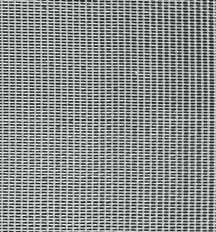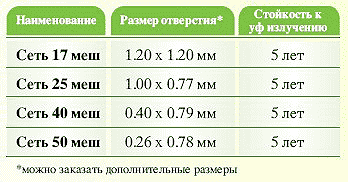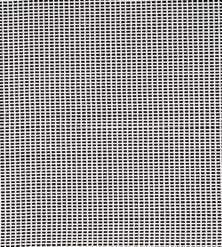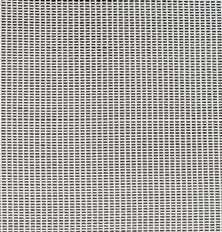Special nets in agricultural

Anti-insects and other protective nets
Diseases and pests of agricultural crops is a real scourge for producers. Huge funds are spent on plant protection. However, they usually struggle not with cause, but with consequences. Both in medicine and plant protection, there are two approaches: prevention and treatment. Prevention is certainly more effective and cheaper. One of the methods of prevention is the use of phytoprotective nets. Many plant diseases are carried by insects and animals that feed on plants or their sap. How to protect your plants damaged by insects - pests and being infected by viruses, fungi, and bacteria that insects carry? The way is simple. Close the area on which plants are grown with a special plant protection net through which insects - pests cannot penetrate. This method is simple and very effective. It should be noted that as a result of the sharp decline in the volume of pesticides used to combat pests and diseases, or the complete abandonment of their use, we get an additional positive effect - environmentally friendly products, which are extremely important now for the consumer market.

More and more farmers use the new efficient technology, called NETHOUSE, that is, in free translation - House from the net. The use of phytoprotective nets for this purpose is the main component of organic farming.
Anti-insects protection nets
 Large areas of crops are currently protected by plant protection nets. Often for this purpose, inexpensive and easy to install and operate cultivation facilities - NetHouses are used. Why use nets to protect against pests? In recent years, more and more attention has been paid to issues related to the negative impact of pesticides on people and the environment. Consumers are increasingly abandoning pesticide-treated agricultural products. This tendency to reduce the use of toxic substances will develop and intensify in the coming years as a result of public concern about their health and the adoption of new, more stringent laws on environmental protection. Pest insects cause irreparable damage to agriculture: they bite plants, damage fruits, suck out plant sap, spread dirt and diseases, thereby damaging plants, spoil visibility, and reduce yield. It is also known that agricultural pests are accustomed to chemicals during their repeated use, which significantly reduces the effectiveness of chemical control methods. Therefore, it is simpler and much more effective, and as a result, it is more economical to use shelters for plants with a phytoprotective mesh.
Large areas of crops are currently protected by plant protection nets. Often for this purpose, inexpensive and easy to install and operate cultivation facilities - NetHouses are used. Why use nets to protect against pests? In recent years, more and more attention has been paid to issues related to the negative impact of pesticides on people and the environment. Consumers are increasingly abandoning pesticide-treated agricultural products. This tendency to reduce the use of toxic substances will develop and intensify in the coming years as a result of public concern about their health and the adoption of new, more stringent laws on environmental protection. Pest insects cause irreparable damage to agriculture: they bite plants, damage fruits, suck out plant sap, spread dirt and diseases, thereby damaging plants, spoil visibility, and reduce yield. It is also known that agricultural pests are accustomed to chemicals during their repeated use, which significantly reduces the effectiveness of chemical control methods. Therefore, it is simpler and much more effective, and as a result, it is more economical to use shelters for plants with a phytoprotective mesh.
Mesh application
Recently, in the cultivation of many crops around the world,
nets are increasingly being used to protect against pests, as one of the main means of combating them. These devices are designed to block the path of pests in the cultivation room in which the plants are located, and thus significantly reduce the use of pesticides.
Most often, protective nets are used in growing vegetables,
herbs, flowers, as well as on fruit and berry plantations.
Nethouse (house from the net) - light structures, usually consisting of a light frame, or pillars and cables, on which the network is stretched.
Greenhouses - in greenhouses, the net is stretched onto the ventilation holes, or the frame is completely covered with a net.
Arched greenhouses - these facilities are fully covered with a net, or a combined net and polyethylene coating is used.
Nets for protection from harmful insects block pests from entering the plants.
We bring to your attention to several types of nets of various density. The number of net holes per inch is measured in units of mesh.
The choice of a net of a particular density depends on the type of insect with which you have to fight.
It should be noted that it gives an additional positive effect: light scattering, light shading, and reduction of fluctuations in day and night temperatures inside the structure.
Types of protective nets
 | 17 mesh netIt is designed to protect against fruit flies (Mediterranean fruit fly, fig footer), grasses worm worms, and Deudorix Livia on plantations and vineyards, and also protects from adverse weather conditions (hail, wind gusts, excessive solar radiation). |  | 25 mesh netDesigned to protect exported peppers from the Mediterranean fruit fly. |
 | 40 mesh netIt is intended for partial protection against whitefly in cases when ventilation conditions do not allow the use of a 50-mesh network. |  | 50 mesh netDesigned to protect against whitefly, aphids and mining flies. |


The OptiNet is an advanced new-generation insect protection network with a combined mechanical and optical barrier.
The new network significantly reduces the penetration of agricultural pests, mainly it’s about thrips, but the nets also protect against whiteflies and mining flies.
There are non-toxic optical additives that blind and repel insects before they even get closer to the protected structure.
The results of the study, which was conducted at the experimental station “Absor”, together with the research center at the Israeli Ministry of Agriculture, for four years, showed that when using OptiNet 40 and 50 mesh thrips population decreased by a factor of 8 compared with the conventional 50 mesh net.
This is the only net in the world that allows you to successfully deal with thrips, without disrupting ventilation, and sometimes even improving it through the use of OptiNet 40 mesh net.
The net does not lose its optical properties and retains them throughout the entire period of use.




Optinet-40 Optinet-50
Protection against birds
Another problem with crop protection is protection against birds. Birds are quite damaging, and in some cases can almost completely destroy crops such as cherry, cherry, strawberry, raspberry, and others.
For this purpose, a special protective net has been created that effectively protects the crop, primarily fruits, and berries, from being damaged by birds.

Birds that harm agriculture and the damage they cause:
 Black Crow
Black Crow
Pecks and eats fruit rips walnuts and pecans, pecks greenhouse film, and damages irrigation systems and structures on plantations.
Starling
litters leaf surface and fruit with droppings eat seeds and sprouts, sweet cherry and strawberry fruits.
Linnet
Damages strawberry fruit.
Sparrow
Pecks fruits on plantations damage sprouts and stalks of plants.
Lark
Pecks seeds from the soil pecks vegetables.
Short-
Throated Thrush Pecks vegetables and flowers.
Woodpecker
Eats nuts, pecks pipe irrigation systems.
Partridge
pecks shoots and fruit.

This net is produced from 2.1 meters to 10 meters wide and is delivered to customers in rolls, the length of which is determined in the order.
If you need additional information, please contact our sales department.